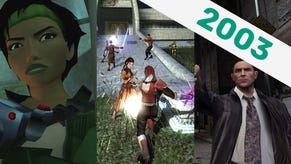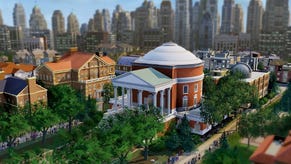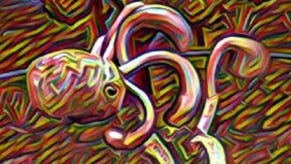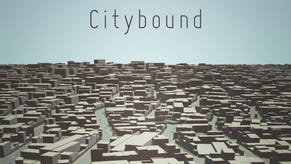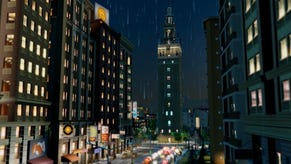Eyes On: Divining Data In SimCity
Infographical
I lived with John for four years, which makes me an expert on sexy. So when I say that there's something damn sexy about SimCity's data layers, then you have to believe me. Maxis's reworking of their city simulation is getting a lot of attention for the way they're attempting to display the graphs and percentages of the working of a city as part of the living, breathing world. You want to see if there's a traffic problem? Follow a car and see where it gets stuck, then build bypass routes to clear the clog. It's an idea that creates a startling looking game, but it can't do everything. At a recent EA event I was demonstrated that to really peek at the population or divine the water, you'll need to switch on the data.
The data layers are the easiest way of spotting the problems you've proliferated. They're not a new concept, but the presentation is: live infographics, reacting immediately to the state of the simulation and presenting all that scary environmental data in readily readable graphics. Sadly, despite showing off a few of these in action, EA's screenshots are annoyingly generic. You'll have to get your infographic imagining hats on.
SimCity is a drive towards population happiness. You need to consider the impact of what you're doing to your Sims, as well as the city. Build a street, and you need to balance the surrounding areas, and while civic responsibility means you'll need industrialised waste processing and water gathering, it doesn't make the place very civil. I'm guessing you knew that, but that those sorts of small issues are where previous games took time to tell you about their woes. Here's it's different. If you want to see exactly where the effects of buildings extend to, you click the desirability layer. It displays a simple, graduated colour map of where your Sims would like to reside: green is where neighbours are fist-bumping, red is where they're fist-fighting, with the info throbbing according to what's happening on the surface. All live.
Imagine a street, carved into the landscape with the slickness of a paint program, over a clump of red radiating out from a nearby industrial zone. People, or at least affluent, middle-upper class happy-types, won't want to live there. There's a number of options available, but the most immediately beneficial is to drop in a park nearby. A clump of green is settled into a square of buildings, and the effect is instantly simulated: the map starts pulsing out green from where the red was as the park was dropped, and additional upgrades clicked into the base 'toy' radiates green bands desirability out even further. Shacks become houses and the area is much more welcoming.
Another example. You're able to create multiple cities in a region and you can , if you choose, have their infrastructure dominated by a single theme. So if the above parky area was placed in a residential city, you might want to consider placing the less salubrious elements in another city. A gambling themed city is likely to attract a lot of attention from tourists, who can visit your city from nearby regions (from your game, or if you choose is can be friends and online strangers). The tourists can be easily highlighted: the backdrop fades to white outlines and the visitors are all emphasised as floating icons drifting along the streets. You can learn from their numbers how well your casinos are doing, which will tell you how much you rely on them economically. You can see by how they move and where they are just how well public transport supports an influx of visitors.
None of this is graphs, none of it reports with percentages or statistics, it's just the world data mixed with clear art telling you everything you need to know. It take a lot of the guess work out of the city planning, and as long as you have the resources to counter-act a troubled patch the data will guide you. As odd as this will sound, they feel a little bit like a wall-hack, or dev tools. But then if you're in charge of building a city, this is the sort of data you'd expect to be able to read. The art presentation here just does the job of all those years of training.
If you build a gambling focused city, you'll soon realise that casinos are a magnet from crime, and will need the police's POV. The police layer serves two functions: showing you in green where's safe for the people to settle and visit, and showing you where specific crime hotspots lie. The police presence has an interesting effect. It's a lot like plopping down a park to improve the desirability, but where the park is a local perk, dropping a police HQ into city has a global effect. Like the park you can mod the station, sending officers to other cities, radiating out into the world. Those other servants of public order, garbage men, can also wander through the region's cities, happily collecting life's detritus to keep your vision as clear as possible.
You'll see pulses of water and electricity darting around in their own layers, delivering the life-blood to the people. Those are big concepts, but there's plenty of geeky subtleties to have to deal with as well. My favourite is a toggle that will show you how far the public are willing to walk to get to the nearest bus stop. Turn it on and you'll see pulsing nodes radiating along your footpaths, showing you the coverage you need to achieve before people decide they'd rather not bother. For normal people it's about 400m, which I'm told is a real-world statistic. Cheekily students will only walk 200m. That seems about right.
I was always a bit sceptical about SimCity, because I never knew just how much data is there for the players to play around with. It looked like the SimCity equivalent of the recent Microsoft Flight. But while it looks cute, there's a rather serious underlying set of data to understand and tame. A lot of that would be useless if the information wasn't there, obfuscated by the notion that it's all readable in the way the city moves. But it's there, and the clarity and responsiveness of it is lovely.




